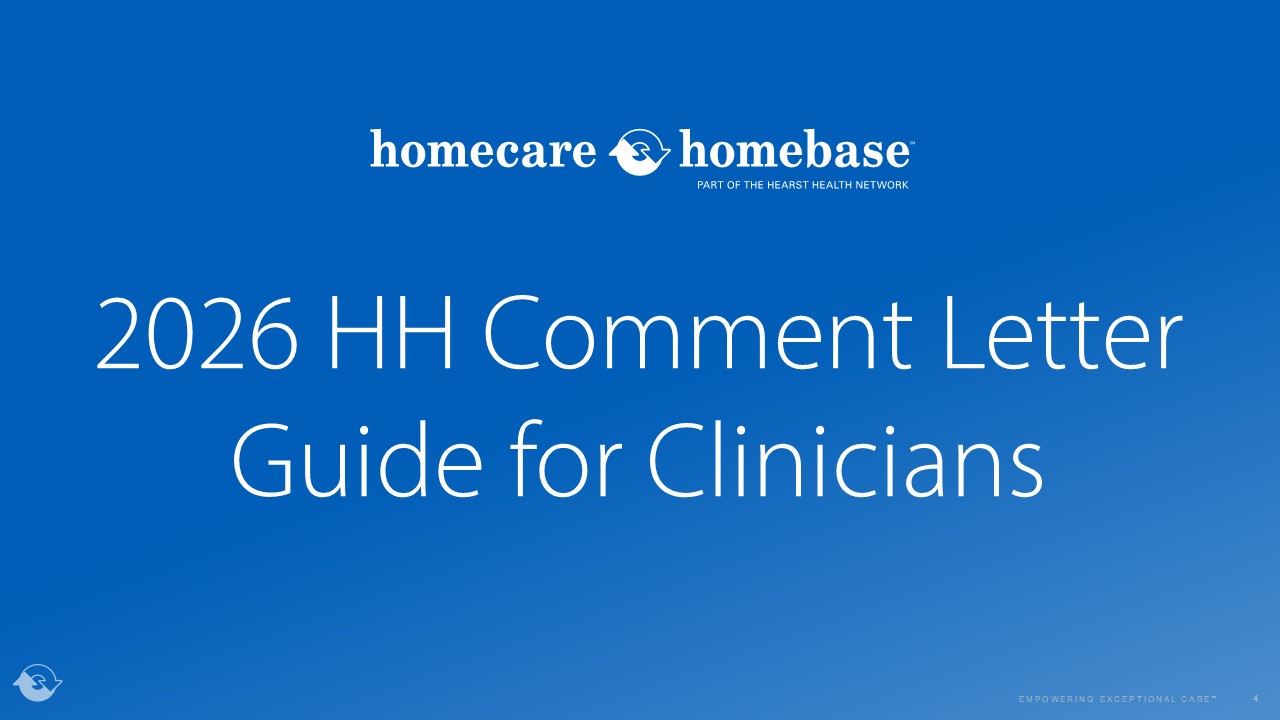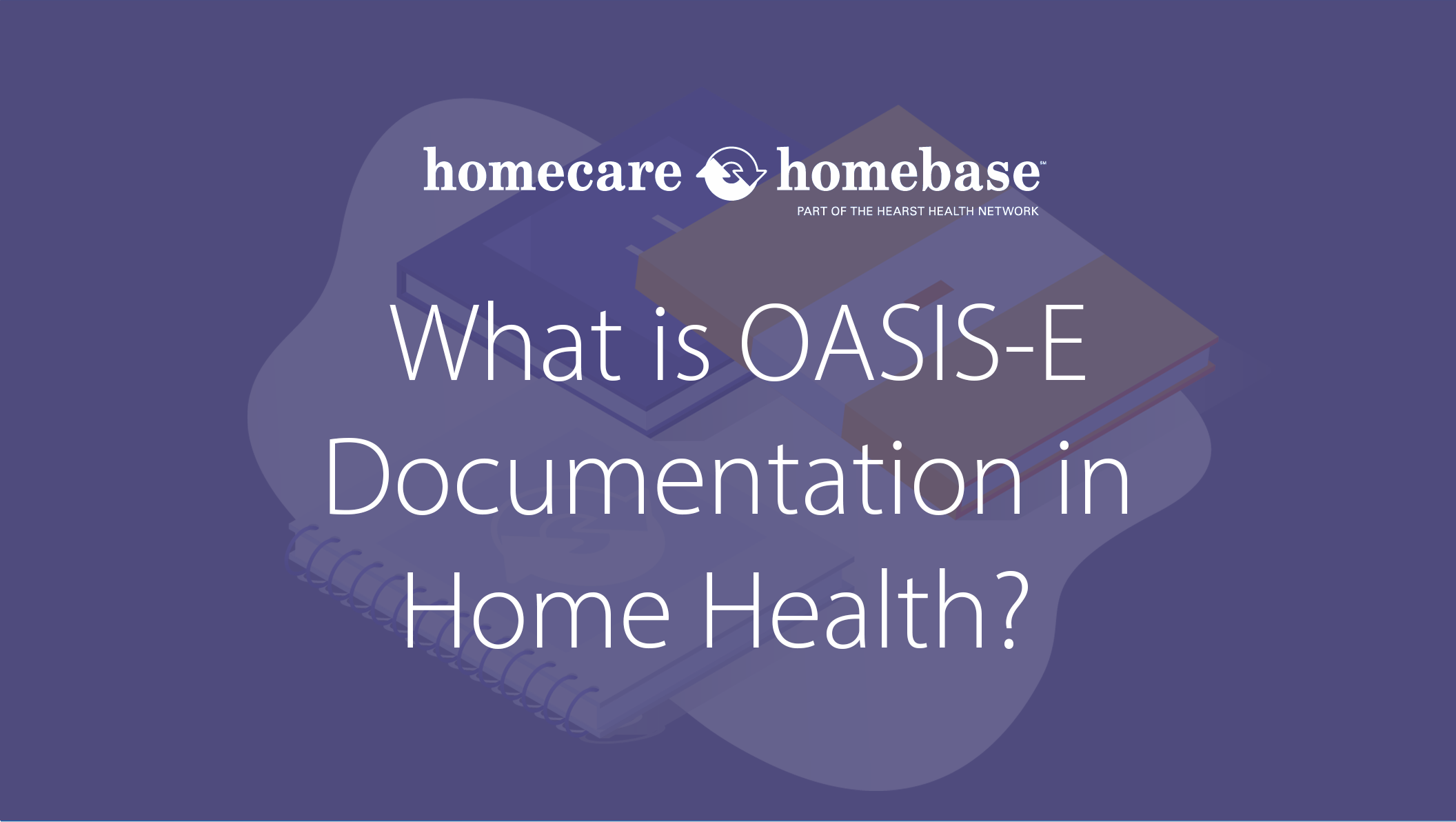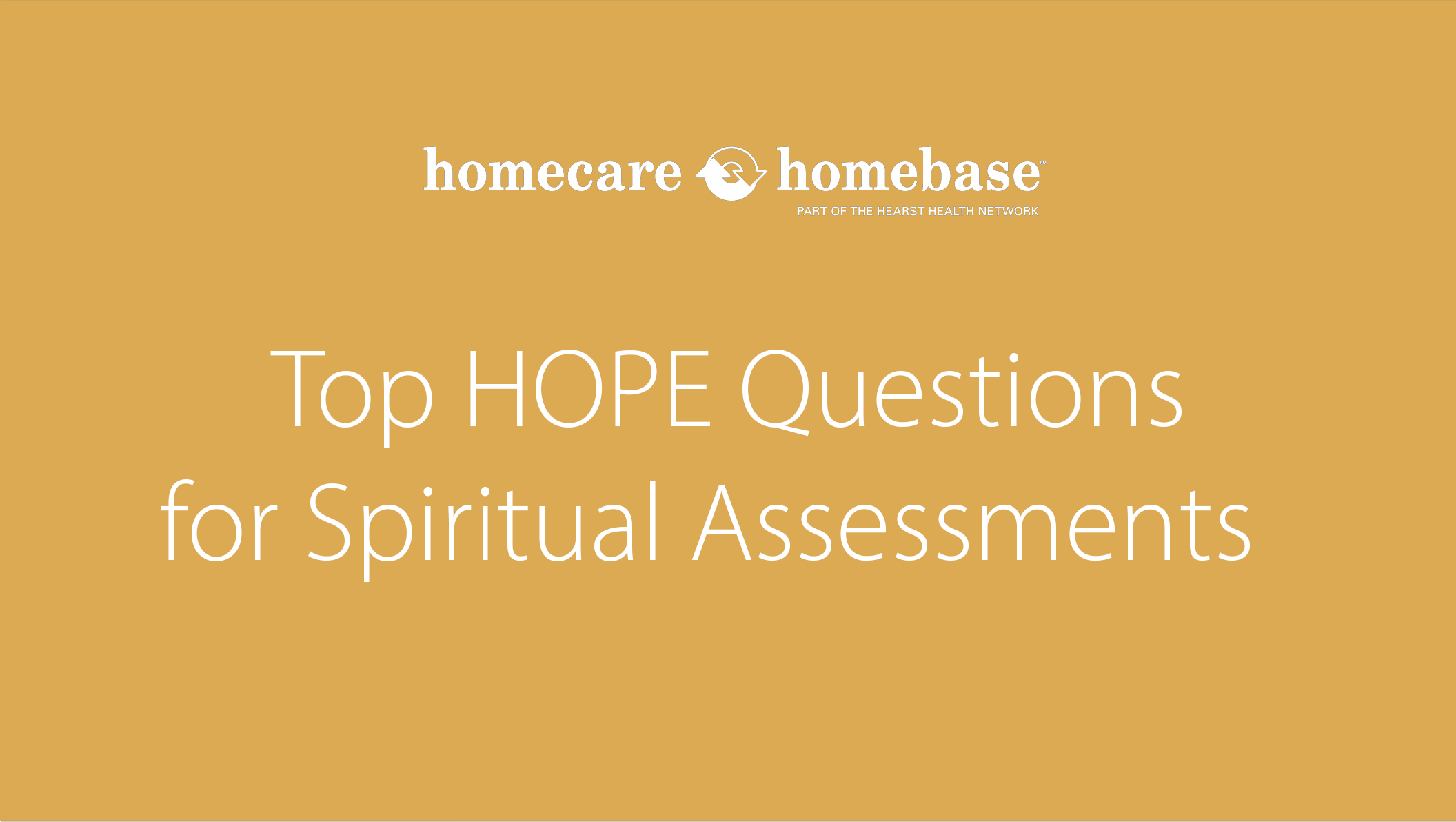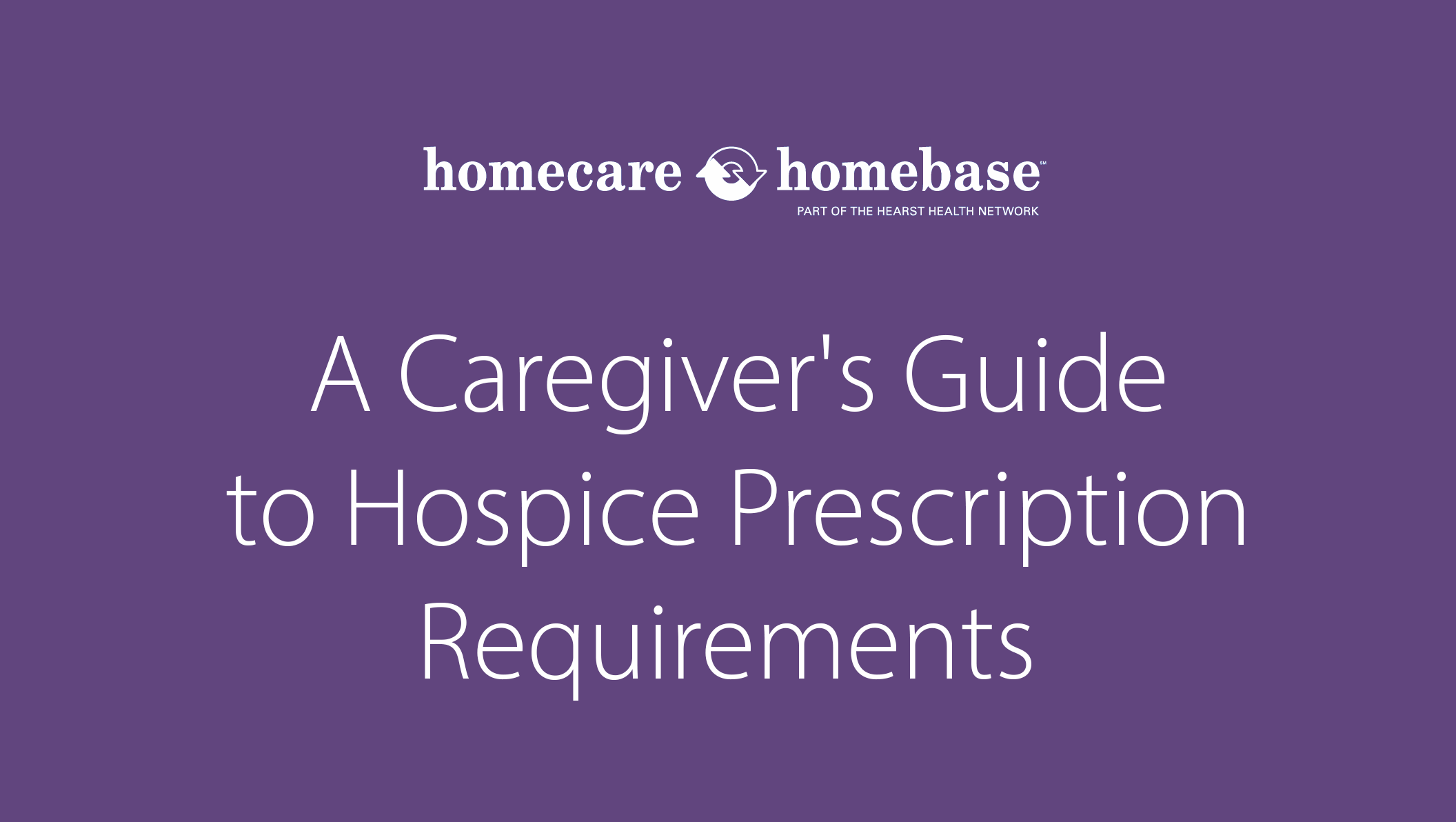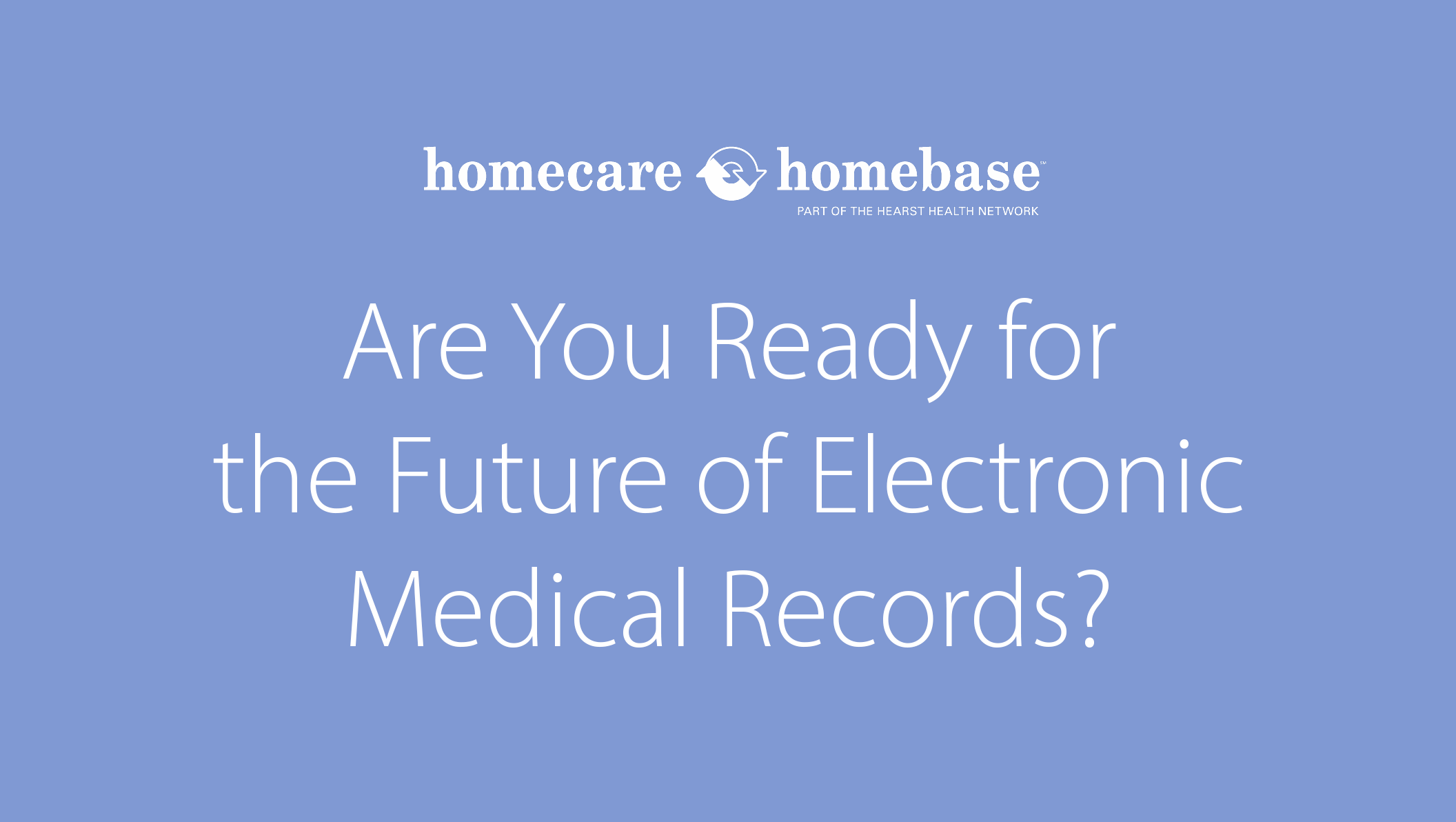The expansion of the Home Health Value Based Purchasing Model (also referred to as VBP or HHVBP) was one of the most significant changes detailed in CMS’ 2021 Home Health Final Rule. In this blog, we will explore key information regarding the program and how CMS will calculate agency scores.
What is the Home Health Value Based Purchasing Model?
HHVPB is a program designed by CMS to improve home health care quality while simultaneously reducing Medicare costs. The program was tested in nine states starting in 2016 and is one CMS’ most successful demonstrations to date, resulting in a 4.6% average improvement in home health agencies’ quality scores and an annual savings of $141 million to Medicare. VBP accomplishes this goal by applying revenue adjustments that increase or decrease the payment to agencies by 5% depending on their quality performance.
The model will be expanded nationwide with a pre-implementation year in 2022. The first performance year will begin January 1, 2023. At this point, CMS will start collecting the data that will be required to score home health agency performance. This approach gives providers a full year to educate staff and prepare for the changes required by the Home Health Value Based Purchasing Model.
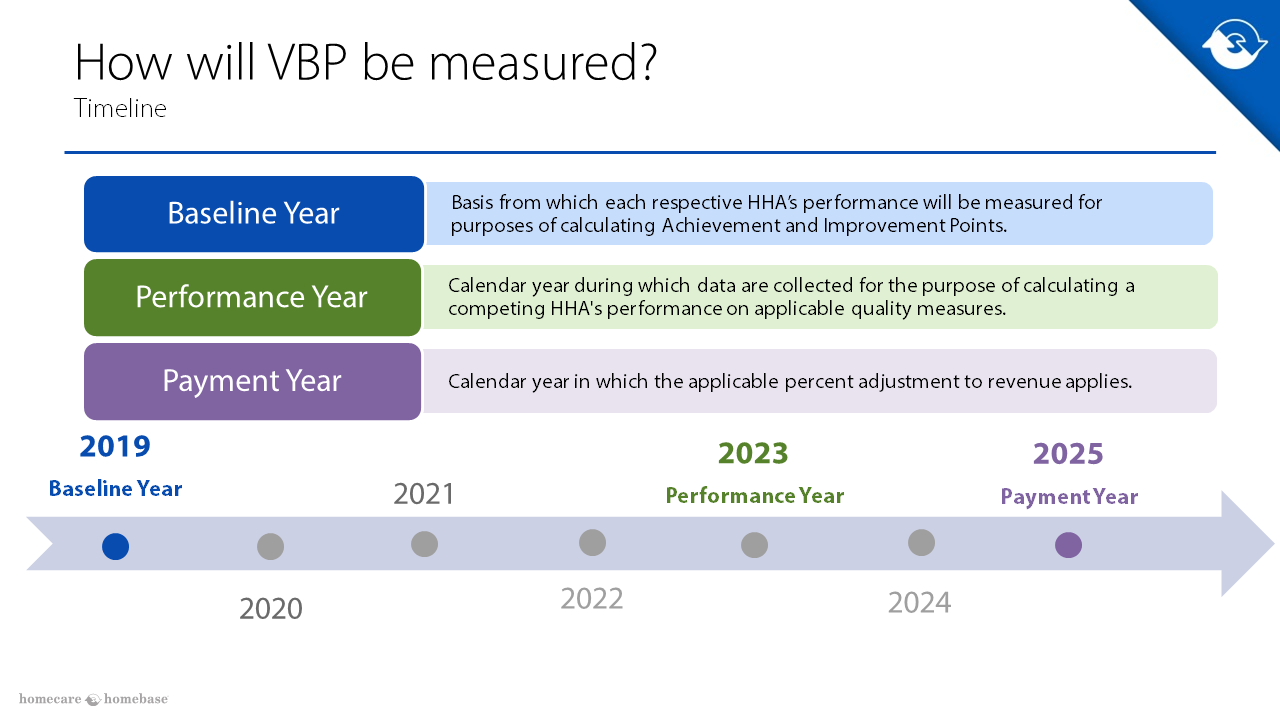
VBP Quality Measures
CMS will compare the 2023 and 2019 performance metrics for each agency to determine the appropriate payment adjustments based on how their scores compare with other home health agencies in their cohort. Providers will start to see these payment adjustments starting in 2025. To create VBP scoring, CMS has focused on 8 quality measures that speak to patient outcomes, functional status, utilization and patient experience.
The following 5 quality measures will be pulled from OASIS data:
- TNC self-care
- TNC mobility
- Improvement in dyspnea
- Improvement in mgmt. of oral medications
- DC to Community
The remaining quality measures are based on claims and survey data:
- HHCAHPS
- Acute care hospitalization
- Emergency department use
How HHVBP Scoring Works
CMS needs to compare agency performance to establish an average expectation of quality across the home health industry. To accomplish this goal CMS has established 2 size cohorts, a large cohort with greater than 60 annual patients and a small cohort for agencies with fewer than 60 patients per year. The large cohort encompasses 93% of providers and 99.5% of home health patients across the U.S. CMS will figure out how an agency ranks within their cohort with the following calculations.
To create the initial home health value based purchasing scores for each agency, CMS will establish 4 values based on the providers’ actual results from the performance year (2023) and the results from the baseline year (2019). The 4 values are:
- Performance (2023 data)
- Improvement threshold (2019 data)
- Achievement threshold (2019 data)
- Benchmark (2019 data)
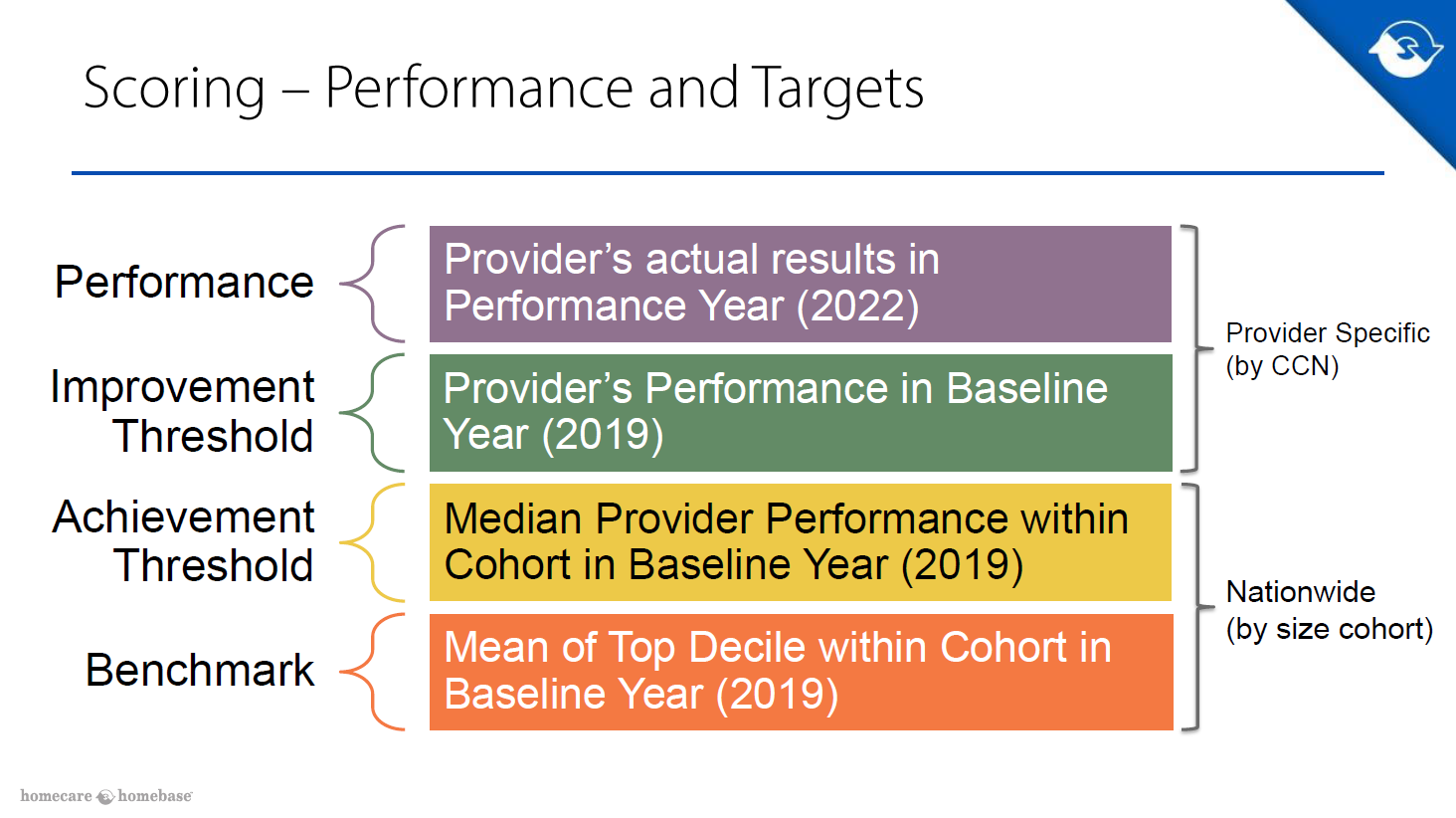
These four values are used to calculate the following 2 scores:
- Improvements score – compares the performance value to the improvement threshold and benchmark
- Achievement score – compares the performance value to the achievement threshold and benchmark
CMS will choose the highest of the two scores in the VPB performance score calculations for each quality measure. The slide below shows the calculation formulas.
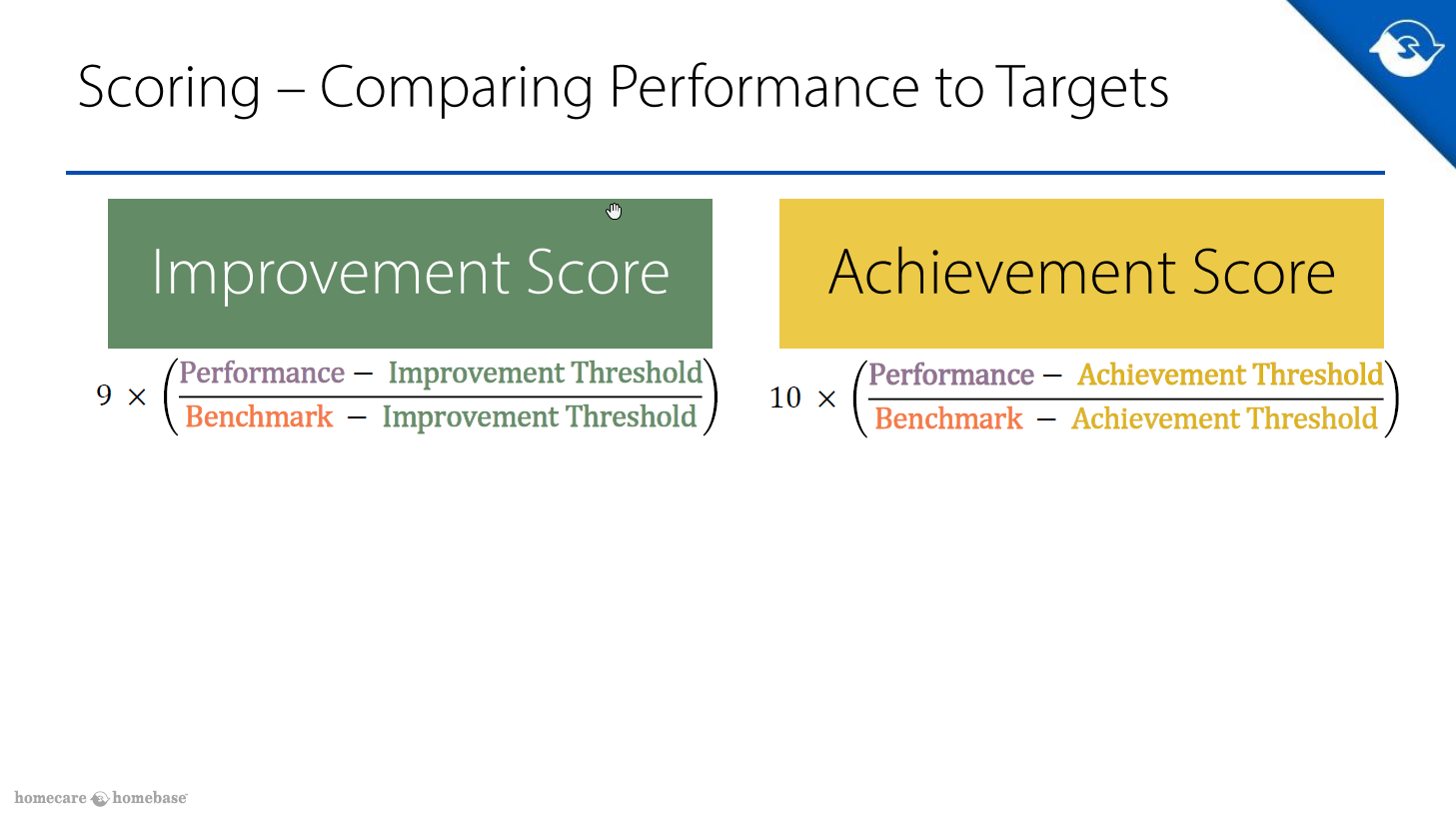
Once the highest value has been decided, CMS multiplies the highest value by 10 and applies the appropriate measure weight to get the final score for each quality measure. All 8 quality measure scores are then added together to get the total performance score (TPS).
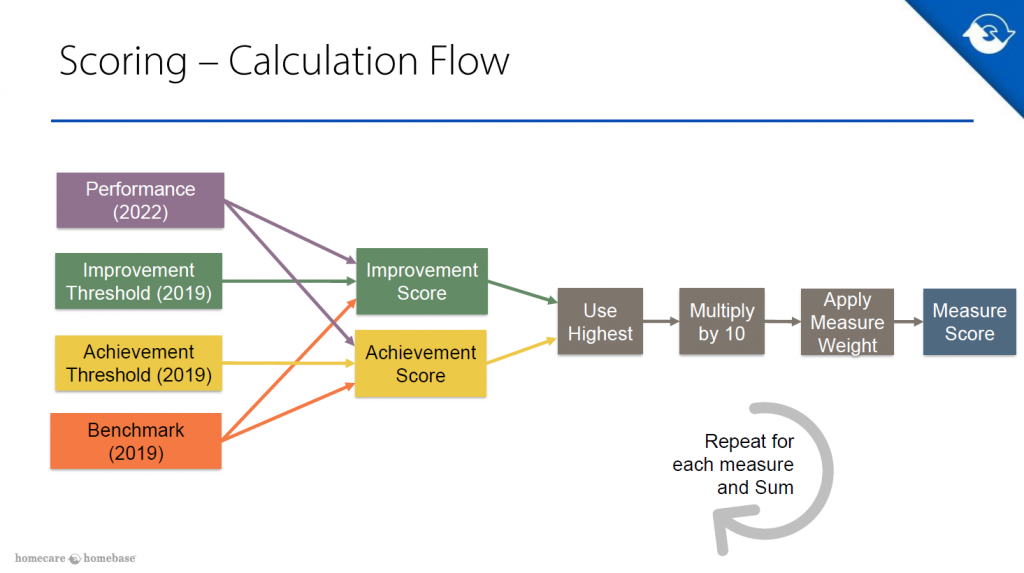
The measure weights can be thought of as the max score allowed for each quality measure. For example, an agency can score between 0−5.83 for improvement in dyspnea, but the score for that measure will never exceed 5.83. As a result, it will be important for providers to take the weights into account when they establish performance goals. For example, an agency may get more “bang for their buck” focusing on the measures with higher weights. The slide below illustrates the home health value based purchasing weights and a total performance score (TPS) example.
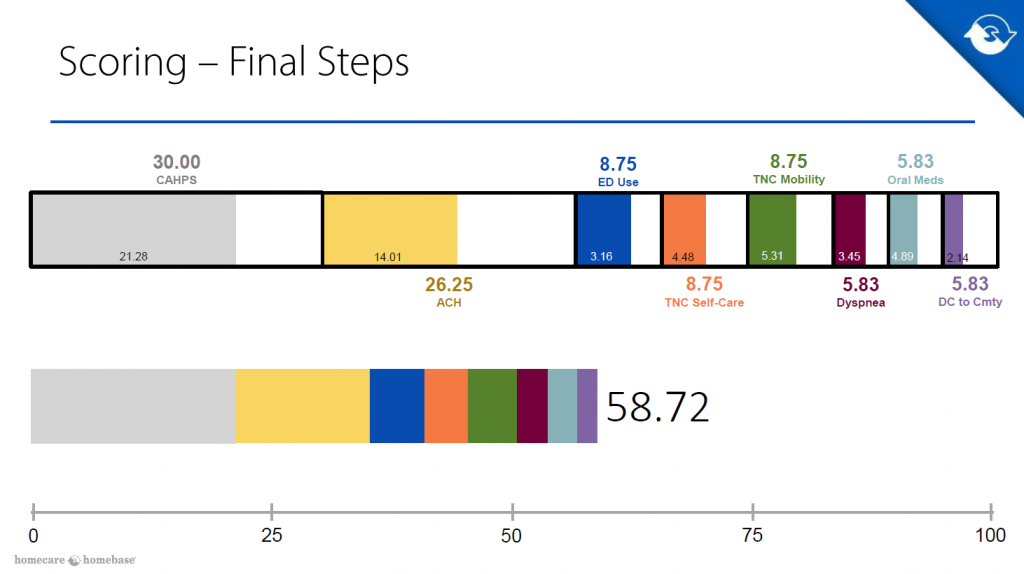
CMS will apply a linear exchange function to the final score to determine each agency’s revenue adjustment. The agency can receive anywhere from a negative 5 to a positive 5 percent adjustment.
Homecare Homebase is eager to help our customers succeed under HHVBP. We are making adjustments to our platform and creating new dashboards in HCHB Analytics to make it easier for agencies to forecast their potential HHVBP scores. Taking note of your agency’s potential scores during 2022 will help you identify the best opportunities for improvement and make changes before the official performance year starts in 2023. Contact our sales team online or call us at 1−866−535−4242 to demo our HHVBP dashboards. If you are already an HCHB customer, contact your Account Executive or review the VBP Overview and Plan of Intent Webinar available on the Homecare Homebase customer experience portal.


